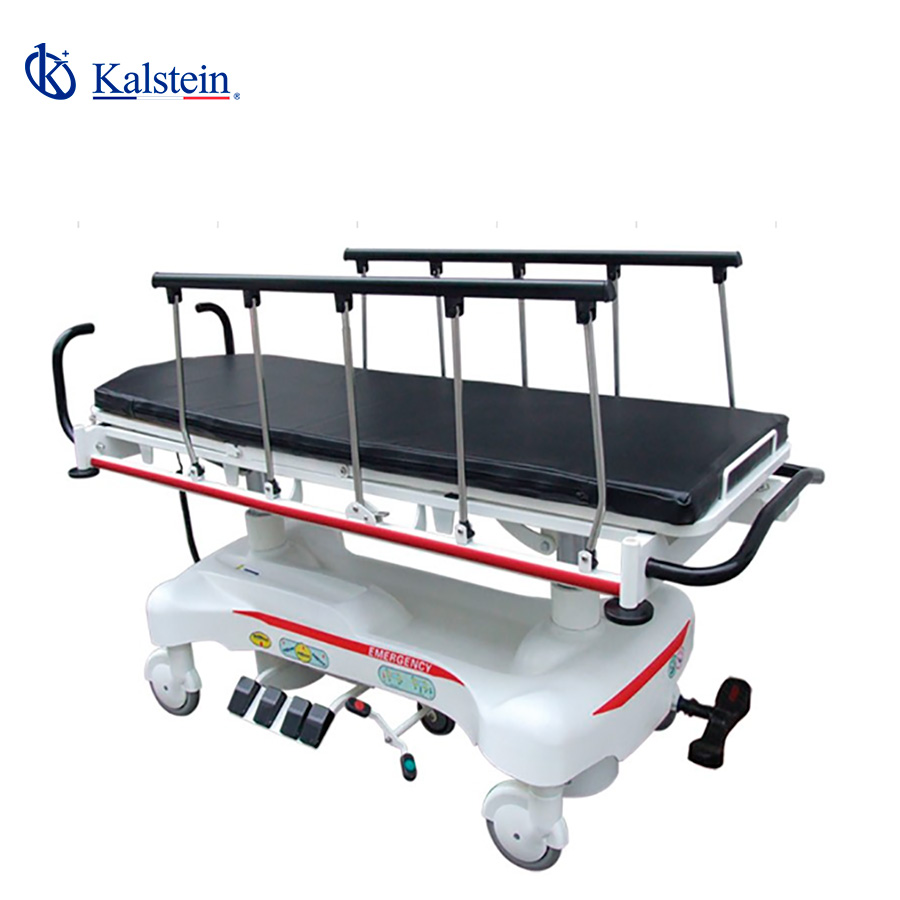Medical transport stretchers have evolved significantly in recent years, driven by the increasing demand for efficient and safe emergency equipment. These innovations in laboratory equipment and developments in medical devices have not only improved patient care quality but also optimized the work of healthcare personnel.
The introduction of lightweight yet durable materials, advanced support systems, and integrated technology are just a few of the improvements that stand out in modern transport stretchers. In this article, we explore how the medical line’s transport stretchers align with the latest trends and how these innovations are transforming medical care.
Lightweight Materials and Optimized Durability
One of the most notable trends in medical transport stretchers is the use of lightweight and durable materials. The incorporation of aluminum alloys and advanced polymers has enabled the production of stretchers that are significantly lighter than their steel predecessors, without compromising durability or load capacity.
These innovations not only facilitate the transport and handling of stretchers but also reduce the risk of injuries for healthcare personnel. Additionally, optimized durability ensures that the stretchers can support patients of various weights, offering a versatile and safe solution in emergencies.
Advanced Support Systems
Developments in medical devices have led to advanced support systems in transport stretchers. These systems include hydraulic and pneumatic mechanisms that allow precise adjustments of height and angle, improving ergonomics for both patients and healthcare professionals.
The ability to quickly adjust the patient’s position is crucial in emergency situations, where every second counts. The medical line’s stretchers incorporate these advanced support systems, ensuring a rapid and efficient response in any environment.
Integrated Technology for Optimized Care
The integration of technology into medical transport stretchers is another emerging trend. Modern stretchers are equipped with sensors and monitors that provide real-time data on the patient’s vital signs. This information is essential for medical personnel, enabling them to make informed and swift decisions during transport.
Additionally, some stretchers have ports for connecting additional medical devices, such as portable ventilators and infusion pumps, allowing continuous and specialized care while the patient is being transported.
Ergonomic Design and Patient Comfort
Ergonomic design and patient comfort are fundamental aspects of the medical line’s transport stretchers. The new stretchers are designed with patient comfort in mind, featuring high-density mattresses and adjustable surfaces that minimize the risk of pressure ulcers.
These advances not only improve the patient’s experience during transport but also contribute to faster recovery. Attention to detail in ergonomic design ensures that the stretchers are easy to use and handle, benefiting both the patient and healthcare personnel.
Safety and Ease of Handling
Safety and ease of handling are key priorities in the design of medical transport stretchers. Recent developments have led to the incorporation of automatic brakes, wheel lock systems, and enhanced side barriers that ensure patient safety during transport.
Moreover, modern stretchers are designed to be easily handled by a single person, thanks to simplified folding and unfolding mechanisms. These features are especially useful in emergency situations, where speed and efficiency are crucial.
Sustainability and Environmental Responsibility
Finally, sustainability and environmental responsibility are growing trends in the manufacturing of medical equipment, including transport stretchers. Manufacturers are adopting more sustainable practices, using recyclable materials and eco-friendly production processes to reduce their carbon footprint.
The medical line has aligned with these trends, offering stretchers that are not only efficient and safe but also environmentally friendly. This environmental responsibility is crucial today, as the healthcare sector seeks to reduce its ecological impact without compromising the quality of patient care.
Conclusion
Medical transport stretchers have undergone significant transformation thanks to innovations in laboratory equipment and developments in medical devices. Current trends, including lightweight and durable materials, advanced support systems, integrated technology, ergonomic design, enhanced safety, and sustainability, have led to the creation of stretchers that improve efficiency and the quality of medical care.
The medical line has adopted these trends, offering solutions that align with the modern needs of the healthcare sector. These stretchers not only facilitate the work of healthcare personnel but also ensure patient safety and comfort, setting a new standard in medical care and transport.
Are you yearning for top-tier medical equipment, ready to enhance the efficiency of your laboratory? Visit https://kalstein.eu/categorie-produit/medical-sector/medical-transfer-stretcher/?lang=en to explore our high-end catalog, packed with the best finds at the most competitive prices. Excellence marks our brand, we innovate and manufacture high-precision equipment, both reliable and durable to meet your needs. Why wait? Make your quick and secure online purchase, take the leap towards the future of medical technology today. https://kalstein.eu/?lang=en

